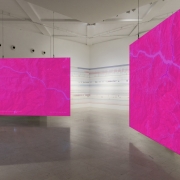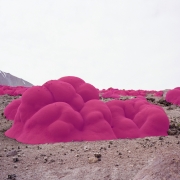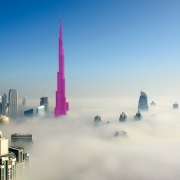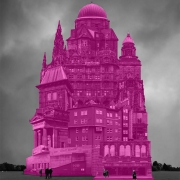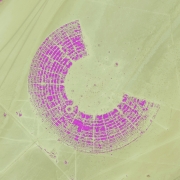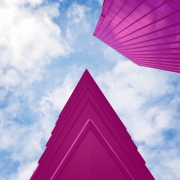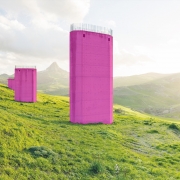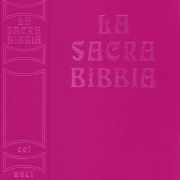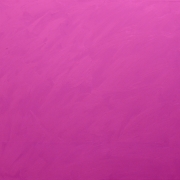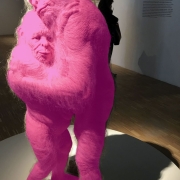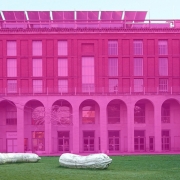Culture: from the latin language colĕre, literally «to cultivate». The total amount of intellectual knowledge that a person has acquired through study and experience, all re-examined with a deep and personal rethinking in order to convert the notions from simple erudition to constitutive elements of personal moral, of spirituality and of esthetical taste. Thus, in brief, in the self-awareness and perception of the outer world.¹
Time: from the latin language tĕmpus, item of uncertain origin. The introduction and the representation of the modality according to which single events follow each other and the way that they are related, repeatedly perceived as a factor that inevitably drags the evolution of things or conceived as cyclical scanning and periodic of eternity. This dichotomy depends on whether irreversibility and caducity of human happenings are emphasized or the eternal recurrence of astronomical events; in addition, this fundamental intuition is determined from environmental factors (biological cycles, the succeeding of day and night, the cycle of season, …) and psychological aspects (the various status of the consciousness and of perception, the memory) and it has been historically diversified from culture to culture.²
Such as other authors that have contributed to Number 04, I have felt the need to describe the definition starting from the key words, Culture and Time. This process comes from two principal factors: firstly, the urgency of having a base from which to frame a thought and, secondly, the absence of an appropriate language that can express contemporary concepts. Concerning the second topic, it is evident that the problem is physiological; the language is based on a series of words that establish some notions developed thousands of years ago as semantic roots.
The demand is that of a new language that can organize and interpret our contemporaneity. The absence of it takes shape in a total phycological and cultural confusion.
In this regard, the images, symbols that constantly fulfill lives though social media and advertisings, try to awkwardly substitute the role of language and generate a distorted and incomplete way of thinking. Unfortunately, images are not enough; the requirement is of producing new words that can express new concepts or that can develop the existing ones. Indeed, the need includes new neologism that can identify our epoch offering the possibility to overcome it.
In the book of the Genesis³, God creates the universe and He assigns a name to all the things; the language is creator and the importance of names is not just a cultural fact, it is a motion.
Architecture, as being a reflection of the society, is affected by the current situation and it is totally free from identification and self-determination.
Until nowadays, the terms that have characterized the theoretical panorama are already inconvenient and it seems that they are present for their own sake. It is not possible to continue to add prefixes and names inherited from the last Century, Post-whatever and Neo-whatchamacallit: these are hasty attempts to take distance from the past and they try to identify a present by embroidering over it. The contemporary epoch is characterized by a drastic rupture with the past; as such, the choice of the name representing it must be independent.
The mistake that the contemporaneity is actually making is the reading of present times a posteriori. It looks like it does not belong to us and the attempt is the one of naming it, as a historian would do. However, it is not possible to be historians of ourselves. Actual dynamics are observed as they would autonomously happen without our contributions and the trial is about fixing the present by addressing names that are chosen not by us but by the present itself. We passively analyze what we are doing without the consciousness that we can decide the “style” (the Culture) of Our Time and it does not have to be necessarily a historical or circumstantial imposition.
I am convinced that the right question to wonder is: where do we want to go? Rather than: where are we going to?
I would like to recall an event that will take place in Milan between the 20th and 26th May. History is identified as a sort of stratigraphy; it materializes in this way. The Arch Week⁴ of this year is entitled “Anthropocene and architecture”, where Anthropocene refers to “the actual geological epoch in which the main causes of territorial, structural and climatic transformations are attributed to the human being and his activities.”⁵
The Arch Week will be an event strictly connected to the issues of the XXII Triennale di Milano⁶, titled Broken Nature: Design Takes on Human Survival⁷. “Environmental sustainability, technological development, migration phenomena, social transformations are the focus of Broken Nature; they will be related to the urban space and they will be analyzed through an urbanistic and architectural perspective.”⁸
They are fundamental issues and, if put it in this way, more as scientists than as historians, it is possible to go beyond.
Since the beginning, the planet Earth has been subjected to structural, territorial and climatic changes. Violent and devastating transformations such as meteors or natural cycles, as the big glaciations, shape the stratification of the soil and Nature finds a way to go on: it always survives to itself by changing its shape.
Well, it is not about protecting the weak helpless Nature, but it is a matter of surviving. Man is not destroying Nature, it will proceed by changing; the issue regards Man who is destroying himself.
Perhaps, is Man trying to change himself to anticipate Nature?
Thus, sustainability becomes “style” and Architecture turns ambiguous. The word evolves into “style”.
Technology, that in the same way is a mirror of society, is linked to what is built and designed deeper and deeper. It tries to build a new language and, maybe, that is the need.
The migration phenomenon is a priceless human resource that have always given the possibility of an evolution of the species; therefore, rather than persecuted, they should be handled as much as Nature.
The social transformations are frenetically shaping a different world and an alternative Man.
Taking into consideration Our Time, is it truly needed to identify a contemporary “style”?
No, I do not think so. In that regard, the research risks to conclude to a dead end and to a self-intended speculation. Contemporary issues are others, such as the Arch Week testifies. The “style” can be a consequence of these mechanisms.
At this historical moment, problems and goals are linked on a global scale; the architectural research should investigate rather than worry about the “question of style” and barricade itself in theory: without facing reality, the contact with Our Time is lost.
To conclude, I believe that what is needed to be reached is not the “sublime”, something that nobody cares about; instead, a bigger consciousness of the present should be revived for the future.
The articles of Number 04 are a panoramic of different “styles”: “Temporary Style”⁹, “Assent style”¹º, “Landmark style”¹¹, “Neutral style”¹², StileLibero™¹³, “Economical Style”¹⁴, Incompiuto¹⁵, etc. Where are the proposals?
“The truth is always a proposal.”
Vittorio Gregotti¹⁶
Translated into English by Elisa Goi.
¹ Cultura, vocabolario Treccani, www.treccani.it, date of consultation 10/05/2019.
² Tempo, vocabolario Treccani, www.treccani.it, date of consultation 10/05/2019.
³ The Bible, Genesis 1, 1-30, CEI, 2008.
⁴ Milano Arch Week 2019, www.milanoarchweek.eu, date of consultation 19/05/2019.
⁵ Antropocene, Wikipedia, it.wikipedia.org, date of consultation 01/05/2019.
⁶ Triennale Milano, www.triennale.org, date of consultation 05/05/2019.
⁷ XXII Esposizione Internazionale della Triennale di Milano, www.triennale.org, date of consultation 03/05/2019.
⁸ Milano Arch Week, www.triennale.org, date of consultation 03/05/2019.
⁹ Temporary City: the ephemeral in the permanent, www.agora-magazine.com, ultima modifica 01/05/2019, ddate of consultatione 01/05/2019.
¹º Out of Time Architecture, www.agora-magazine.com, last modified 01/05/2019, date of consultation 01/05/2019.
¹¹ Contemporary architecture among research and self-celebration, www.agora-magazine.com, last modified 01/05/2019, date of consultation 01/05/2019.
¹² The integral mimetic fragmentation of Gerhard Richter, www.agora-magazine.com, last modified 01/05/2019, date of consultation 01/05/2019.
¹³ StileLibero. A Revelation., www.agora-magazine.com, last modified 01/05/2019, date of consultation 01/05/2019.
¹⁴ Contemporary relative and architectural stasis, www.agora-magazine.com, last modified 01/05/2019, date of consultation 01/05/2019.
¹⁵ Incompiuto: is the contemporary style?, www.agora-magazine.com, ulast modified 01/05/2019, date of consultation 01/05/2019.
¹⁶ The culture of our time: interview with Vittorio Gregotti, www.agora-magazine.com, last modified 01/05/2019, date of consultation 01/05/2019.


